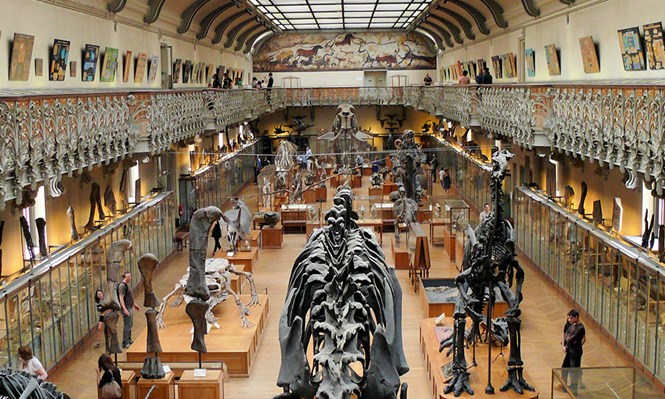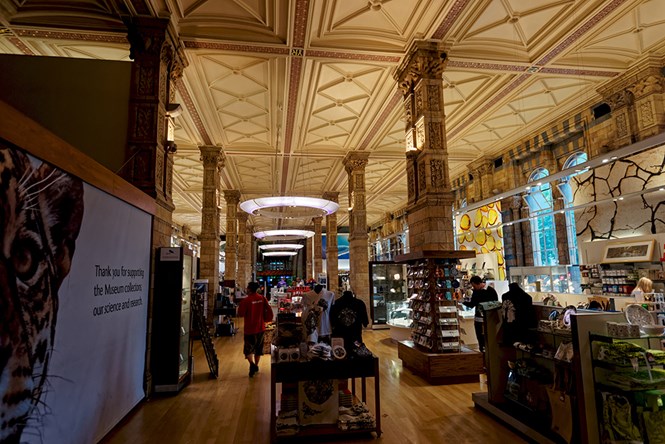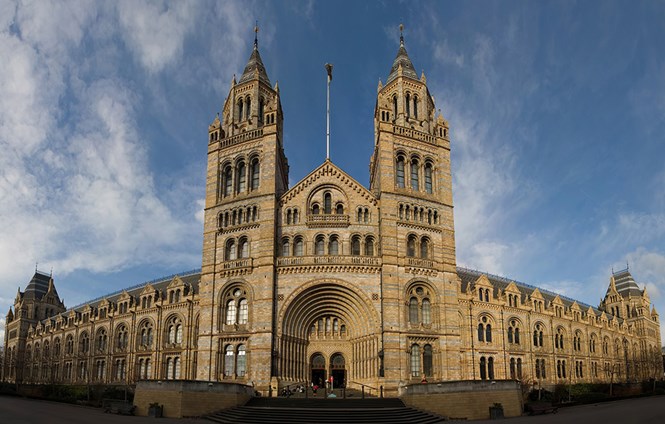Talking shop with the Natural History Museum
What does it take to succeed in heritage retail? We spoke to Natural History Museum buyer Ben Gibson to find out what helps them to boost sales.



The heritage sector has had to navigate many challenges since emerging from the pandemic, including reduced visitor numbers, soaring energy costs, and staff shortages. But there exists opportunity too, especially with a slight increase in global tourism forecast for 2023*. When footfall increases, innovative retail can play a vital role in supporting museums and galleries to get back on their feet.
“Museum retail is no longer just about a pencil, a rubber and a key ring,” says Ben Gibson, Core Range Buyer for the Natural History Museum. “People want to buy something that they associate with their visit and are now looking for something more ‘gifty’. We’ve tried very hard to make our shop an extension of the museum, a seamless part of your visit.”
"We've tried very hard to make our shop and extension of the museum."
Retail at the Natural History Museum recorded its best week in its trading history during the October 2022 half-term school holidays. For Ben, this success is the culmination of efforts from the team to achieve the right product offer, operational excellence, and inspiring visual merchandising.
“We’ve got our offer fundamentally right. Operationally on the shop floor, that’s going well, and from a visual merchandising perspective, we’ve made some positive changes. We work hard to not run out of our bestselling products and if anything goes out of stock, it’s not out of stock for long,”
“I think we’re also slightly insulated from the cost-of-living crisis. When people come to the museum, they know they’re going to spend £5 or £10, or £15 in the shop and they’ve budgeted for that before they come in.”

“If we’re doing the principles right, and doing them consistently, it’s all we can do.”
Whether or not the museum’s visitors may limit their spending power as economic pressures potentially intensify remains to be seen but for Ben the best way to navigate the uncertain times ahead is to stick to the principles of retail best practice.
“Is there a magic bullet?” he asks. “I don’t think there is this one thing that’s going to help us, but we anticipate that people will still come to the museum. Will they still have the spending power in six months’ time? I don’t know. But if we’re doing the principles right and we’re carrying those out consistently, then I think fundamentally it’s all we can do.
“If you give someone a product offer that is unique and contemporary, products you don’t really see on the high street, and for us that often means something that is NHM branded, developed by ourselves and good value for money, hopefully that’s going to lead to them making a purchase.”
“We try to look at what’s happening in the world around to inform our product choices.”
As Core Range Buyer, Ben is responsible for selecting and curating the core (non-seasonal) product range for the museum’s shop, online and in-store. Product decision-making is heavily influenced by the needs and wants of the museum’s visitors and to reflect that museum experience, items are usually tied thematically to exhibitions and core collections.
“Predominantly, we’re catering for families who have come partly for an educational experience and are looking for value for money. So, that is reflected in the products we sell. We look at high street retail trends in colour or design and think about how we can fit those into the museum. And we try to look at what is happening in the world around to inform our product choices, especially sustainability and the environment. Books are a good example of that. We’ve created an ecological focused range of books, that we never really had before,” he says.
Books have been performing well for the Natural History Museum’s shop, says Ben. This is after making changes to the range, streamlining the offering with support from Bookspeed, and refreshing the visual merchandising. Colleagues have been noting that the books section looks the best it ever has.
“It’s about putting key books in key areas of the shop.”
“It helps so much if everything is facing. I was always taught that people don’t shop spine-on. So, our visual merchandising team has been doing a lot of work to make sure everything is face-on, even though that meant reducing our range,” Ben says.
“We’re utilising our tables a lot more, displaying at different heights and using acrylic book holders, so it’s all easily accessible. We try to integrate books with other products, so for example if we’re running a range on whales, we’ll add a popular book on the subject. It’s about putting key books in key areas of the shop, like on the till queue. What we’re pushing at the moment is our NHM branded dinosaur annual, so we have it near the till points for people to pick up as they’re waiting.”
Books that sell well at the Natural History Museum are not too surprisingly dinosaur themed and aimed at children. The current bestseller is Peppa Pig’s Dinosaurs Sticker book but Mr Men books and the Little People, Big Dreams series perform well, especially Mary Anning. Popular science titles are a mainstay of the book range, with books authored or featuring contributions by the museum’s own academics often included.

“By buying a book from us they are contributing to the success of the museum.”
“What I also find quite interesting is that we do still sell books in volume,” says Ben. “People are buying them from us, rather than taking a picture and then searching for a discounted edition online once they are home. They know that by buying a book from us they are contributing to the success of the museum.”
Ben has been working with Bookspeed to select and source books for the past year and says the partnership has made it far easier to sell books, from product selection to the logistics of receiving and processing deliveries.
“Why do I work with Bookspeed? Because fundamentally it’s a very straightforward process.”
“Why do I work with Bookspeed? Because fundamentally it’s a very straightforward process. Before the pandemic, we were working with a large number of publishers but now we deal with just one single supplier,” he says.
“There’s only one invoice for books instead of having to deal with up to 20 from multiple publishers, and that makes life for our retail administrator Anne so much easier. Books used to come into the warehouse sporadically, but with Bookspeed the deliveries come in efficiently, they’re labelled, the invoice is there, so we can process them and get them out onto the shop floor as quickly as possible.
“I was new to books when I took over. There are so many books out there all about the same sort of subjects, so it can be quite hard to drill down and find the ones that specifically work in the shop. However, I can work with our Bookspeed account manager Angus on selecting titles. He’ll suggest books, I’ll suggest books, and others too – it’s a two-way process.”
“We believe we can keep growing and growing and growing.”
For now, things are going well at the Natural History Museum, but Ben has an eye on the future and some bold ambitions.
He says: “We see ourselves as being the leader in the heritage retail sector when it comes to quality, appearance and especially sustainability, while keeping a uniqueness in our identity. Fundamentally, it’s about delivering a joined-up product offer across everything we do: our physical shops, online shops, and our ecommerce offer, as well as investigating new channels in income. Because we believe we can keep growing and growing and growing.”
Be inspired by the Natural History Museum
Work with us
If you would like to add books to your product range, we can make that easy for you. Please get in touch if you would like to have a conversation about books.



